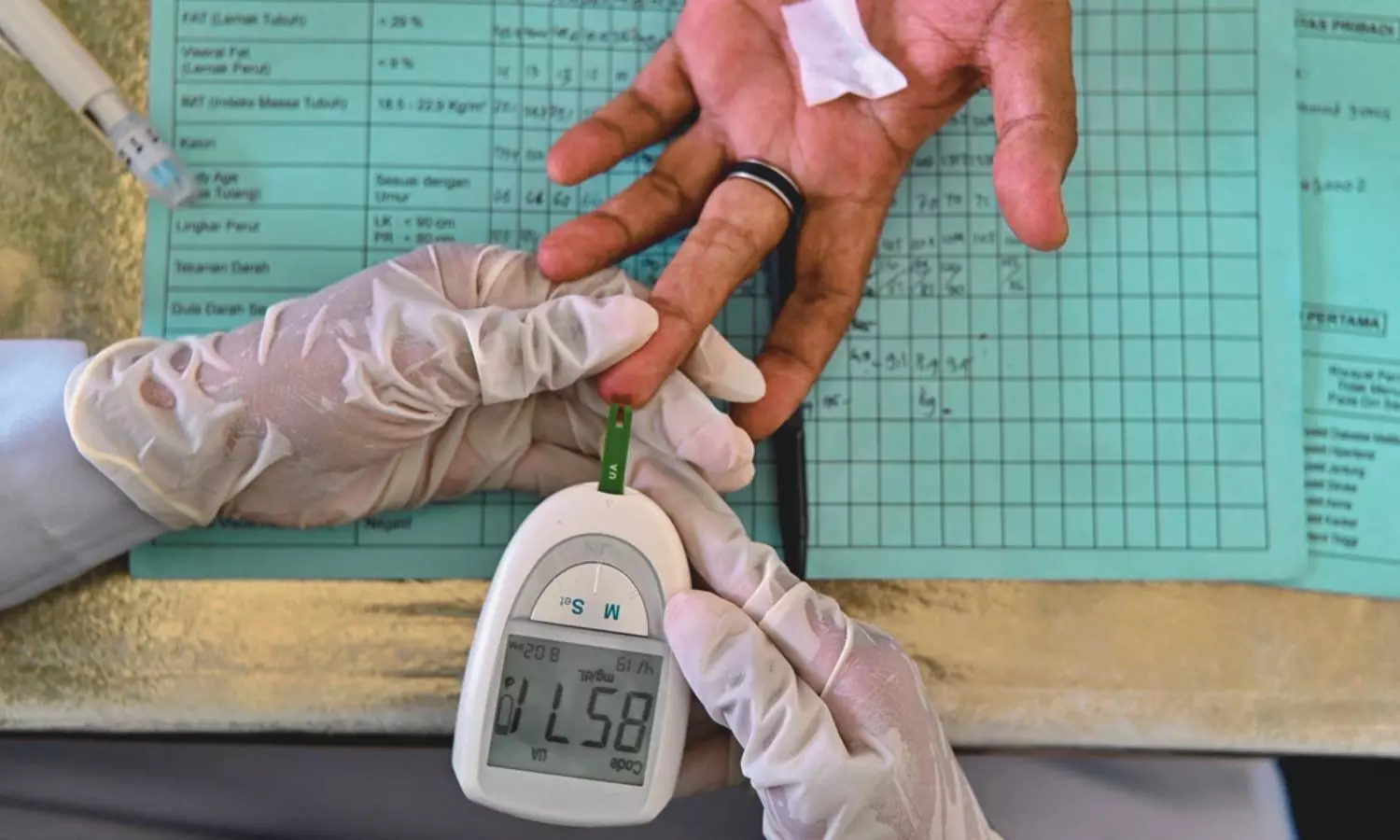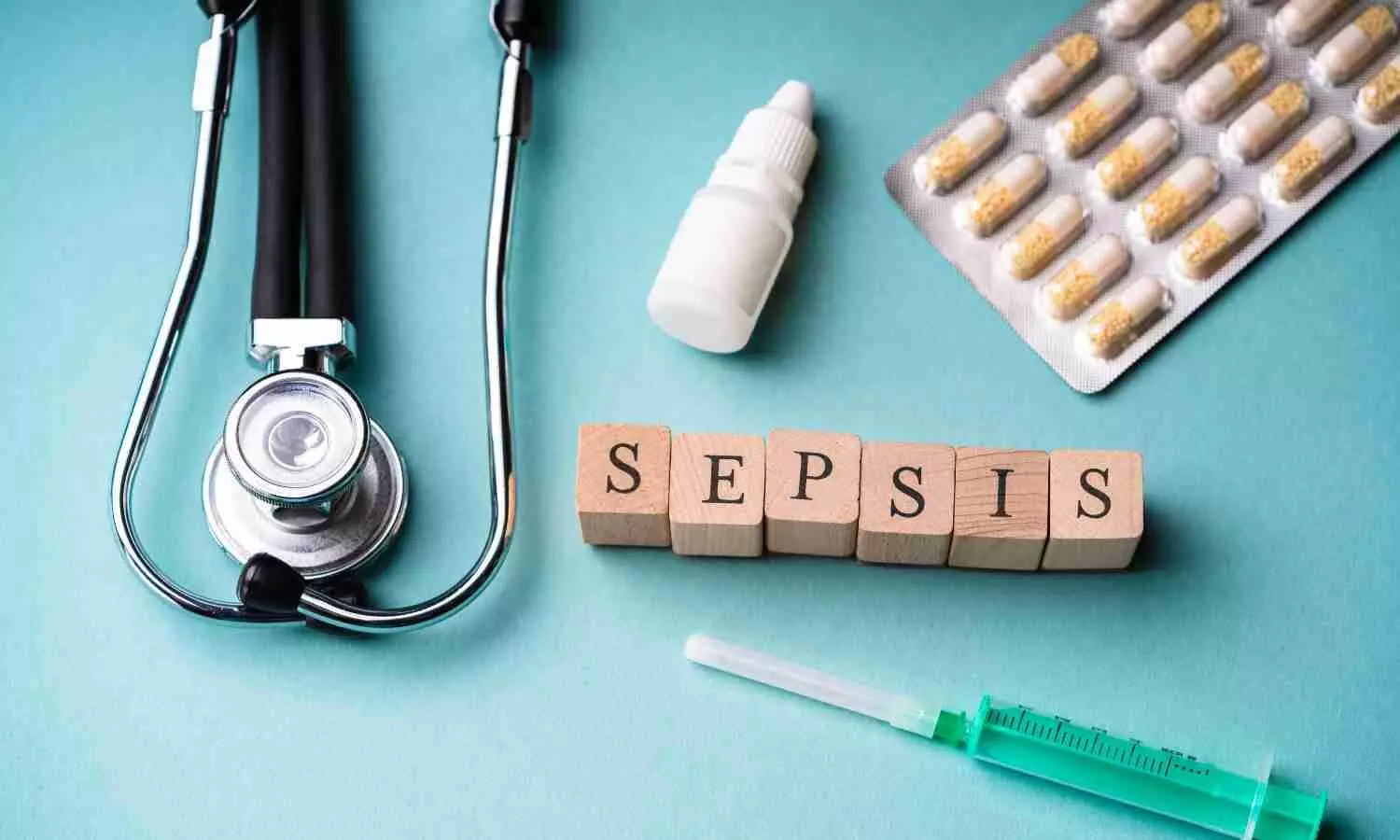Could fecal transplants cause long-term health problems?
Powered by WPeMatico
Powered by WPeMatico

Chandigarh: Taking cognisance of a viral video reportedly showing a doctor couple from the Postgraduate Institute of Medical Education and Research (PGIMER), Chandigarh, allegedly thrashing their 13-year-old adopted daughter, the hospital authorities have confirmed receiving a complaint regarding the incident.
In the purported video, a man could be seen hitting the girl with some object. The girl could be heard shouting and seen trying to run, but the man held her and thrashed her, news agency PTI reported.
A woman, said to be the doctor’s wife, who is also the faculty at the PGIMER, could be seen standing in the video.
The incident reportedly took place a few days ago in Himachal Pradesh’s Shimla, where the family had gone on a vacation.
The matter came to light after a complainant from Shimla wrote to the PGIMER about the incident, expressing concern about the girl’s safety.
Meanwhile, the Chandigarh Commission for Protection of Child Rights (CCPCR) has taken notice of the purported incident in which the doctor was caught on camera allegedly beating up his daughter and sought a report from the police and the child welfare committee in this regard.
As per a media report in the HT, Chandigarh Commission for Protection of Child Rights (CCPCR) chairperson Shipra Bansal said she has sought details from the Himachal Pradesh police where the incident took place and from the child welfare committee regarding the status of the 13-year-old child. She said the commission will take a call on how to proceed once they get all the information.
The PGIMER said it has forwarded the complaint to the child helpline of Chandigarh Police.
“This is a family dispute and a personal matter. We have received a complaint, which has been accordingly forwarded to the relevant authorities. However, the PGIMER is cooperating with the authorities,” said an official spokesperson of the PGIMER, reports PTI.
Also Read:PGI Chandigarh- Junior doctor slapped, kicked and beaten up by infant’s attendants
Powered by WPeMatico

An Instagram reel claims that saunf, adrak, ajwain, jeera, daalchini drink cures PCOD in 10 days. The claim is FALSE
In an Instagram reel, it is claimed that saunf, adrak, ajwain, jeera, daalchini drink cures PCOD in 10 days. In the post by heenahealth786 it is said, “Do you have a problem with hormonal imbalance, PCOD, thyroid, no egg formation, or irregular periods? Then save this reel right now. Today I’m sharing a powerful remedy with you—a drink that will help fix all these problems and also support conception.
First, take a small thumb-sized piece of ginger and grate it. Take one glass of water and add the ginger to it. Then add one teaspoon each of carom seeds (ajwain), cumin seeds (jeera), and fennel seeds (saunf). Also, take a small piece of cinnamon—just a small rolled stick like the one shown on your screen.
Put everything into the water and boil it well. Boil it until the water reduces from one glass to half a glass. You need to drink this in the morning on an empty stomach. You can have it daily for a whole month. Continue even during your periods.
If you’re in the early stage of PCOD, you may start seeing results in just 10 days. But if you have severe PCOD or very stubborn periods that only come with medication, it may take longer—but this drink will definitely help.
I personally used this drink in my PCOD journey—it regulated my periods and even helped me conceive. So, Inshallah, it will help you too. Follow this remedy with a positive mindset.”
You can access the post here
The claim is FALSE. There is no scientific evidence or medical consensus to support the claim, and it is important to emphasize that PCOD is a chronic condition that cannot be cured.
Polycystic Ovarian Disease (PCOD) is a condition primarily caused by hormonal imbalances and genetic factors. In a typical menstrual cycle, the ovaries release mature eggs ready for fertilization. However, in PCOD, the ovaries often release immature or partially matured eggs, which may develop into fluid-filled cysts. This can cause the ovaries to become enlarged and swollen.
PCOD is also associated with an excess production of androgens (male hormones), leading to symptoms such as irregular periods, weight gain around the abdomen, thinning hair in a male-like pattern, and in some cases, infertility.
According to UNICEF, PCOD is not curable due to its hormonal and genetic basis. However, its symptoms can be well-controlled through lifestyle changes, including a balanced diet, regular physical activity, and stress reduction techniques.
Fennel commonly known as Saunf in Hindi, is an herb from the Apiaceae family, with its seeds containing approximately 50% fiber. This versatile plant exhibits numerous pharmacological properties, including anti-allergic, analgesic, anti-inflammatory, antioxidant, antibacterial, anti-cancer, anti-stress, and cytotoxic activities. According to the U.S. Department of Agriculture, 100 grams of fennel seeds provide 345 kcal, 15.8 g of protein, 52.3 g of carbohydrates, 14.9 g of total fat, 39.8 g of dietary fiber, along with essential minerals such as 1200 mg of calcium, 18.5 mg of iron, 385 mg of magnesium, 487 mg of phosphorus, 1690 mg of potassium, and 88 mg of sodium.
Adrak also known as Ginger is widely recognized for its numerous health benefits and medicinal properties. Rich in bioactive compounds, ginger is valued for its potent antioxidant and anti-inflammatory effects, which help protect the body from oxidative stress and support the immune system. It plays a significant role in reducing inflammation and promoting muscle relaxation, making it beneficial for managing pain and discomfort. Additionally, ginger aids in boosting immunity and overall well-being through its immune-modulating properties. Its natural compounds provide therapeutic support, contributing to improved health and relief from various ailments, making it a valuable addition to a balanced diet.
Carom seeds, commonly referred to as ajwain, belong to the Apiaceae family and are widely valued for their medicinal and nutritional properties. Also known as bishop’s weed or ajowan caraway, these seeds offer a range of health benefits. They are rich in bioactive compounds that exhibit antibacterial, antifungal, anti-inflammatory, antioxidant, cytotoxic, antilithiasis, nematicidal, anthelmintic, and antifilarial activities. Nutritionally, carom seeds act as natural stimulants, sialagogues, stomachics, carminatives, and possess aromatic and antiseptic qualities, contributing to digestive health and overall well-being.
Cumin also known as jeera has been traditionally utilized in households for its medicinal properties and is known to offer various health benefits. Cumin is rich in antioxidants, iron, and fiber, aiding digestion and boosting the immune system. It can help in improving blood sugar control and has anti-inflammatory properties. Studies have shown that Cumin may help in the enhancement of memory and may aid in reducing cholesterol levels, contributing to overall health and wellness. The health benefits of cumin seeds may include anti-inflammatory, nephroprotective, antioxidant, and anti-diabetic properties. Additionally, cumin extracts can improve liver function tests in patients with non-alcoholic fatty liver disease.
Cinnamon also known as daalchini is known as the eternal tree of tropical medicine and is a popular spice used daily around the world. It is packed with beneficial compounds, including cinnamaldehyde, cinnamic acid, and cinnamate, which contribute to its numerous health-promoting properties. Cinnamon is known for its antioxidant, anti-inflammatory, antidiabetic, antimicrobial, and heart-protective effects. It may also help lower cholesterol levels and support overall heart health. Additionally, research suggests that cinnamon could have potential benefits for brain health, including conditions like Parkinson’s and Alzheimer’s diseases.
There is no scientific evidence that a herbal drink containing saunf, adrak, ajwain, jeera, and daalchini can cure Polycystic Ovarian Disease (PCOD) let alone within 10 days. While some of these ingredients may have supportive benefits for management, PCOD is a complex, chronic condition that requires a comprehensive approach, not a quick-fix remedy.
Fennel seeds (Saunf) have been shown to help alleviate menstrual pain, as demonstrated in a study by Shabnam Omidvar et. al., which found that fennel can effectively help reduce pain and discomfort during periods.
Emerging research points to the potential benefits of cinnamon (daalchini) in managing PCOD. A systematic review and meta-analysis by Fatemeh Heydarpour et. al. indicates that cinnamon supplementation may help improve metabolic parameters in women with the condition.
While cinnamon may aid in managing PCOD and fennel seeds might help relieve menstrual pain, there is no scientific evidence or medical consensus to support the claim that a combination of saunf, adrak, ajwain, jeera, and daalchini can “cure PCOD in 10 days.”

Dr Rajni Bagai, Consultant – Gynaecology & Obstetrics, Narayana Hospital, Howrah & Chunavati said, “Studies done on the effect of cinnamon, fennel, cumin, carom, ginger etc on obesity and PCOS have involved small numbers of patients , which makes the statistical validity dubious. While cinnamon and ginger have been associated with decreased insulin resistance, fennel seeds with increased oestrogen levels, ginger with anti-inflammatory properties and carom (ajwain) with combined hormonal effects, dosages have not been defined and there are no studies showing that these will cure PCOD in a short time such as 10 days.”

Dr Upasana Palo, Consultant, Gynaecologic Oncology and Robotic Surgery, Narayana Hospital RN Tagore Hospital further added, “Nowadays, PCOD has become one of the greatest concerns in women’s life which greatly affects their health and fertility. It may cause several health complications such as irregular menstruation, obesity, infertility, obstructive sleep apnea, acne and cardiovascular diseases. Several factors may contribute to the pathogenesis of PCOD such as insulin resistance, obesity, and sympathetic stimulation. Several studies evidenced that several Indian spices including E. cardamomum, play a crucial role in the management of PCOS and associated symptoms. It is suggested that PCOD patient should consume a high protein diet that is present in most of the spices. A balance healthy diet with regular exercise and lifestyle modification is essential in PCOD. However, it is also suggested that spices may decrease insulin resistance, regulate the menstrual cycle, improves lipid profile, and also decrease the weight in PCOS patients. However, they alone cannot cure PCOD in just 10 days as it can be only managed and not cured.”
The claim that a drink made from saunf, adrak, ajwain, jeera, and daalchini can “cure PCOD in 10 days” is entirely false. Some ingredients like cinnamon and fennel seeds may provide minor symptomatic relief, but PCOD is a chronic endocrine condition that needs sustained medical, nutritional, and lifestyle intervention and can be only managed and not cured.
Hence, the claim is FALSE.
Powered by WPeMatico

Hyderabad: The Telangana High Court on Friday strongly criticised the state government for its prolonged
inaction in operationalising a fully equipped 100-bed government hospital in Alampur, Jogulamba Gadwal district, despite its completion 18 months ago.
The delay, now extending
to 18 months, has drawn the ire of a division bench comprising Acting Chief
Justice Sujoy Paul and Justice Renuka Yara, who demanded a detailed explanation
from the state within two weeks.
The court was hearing a
Public Interest Litigation (PIL) filed by Ramchandra Reddy, a social activist
and political figure from the district. Reddy informed the court that the
hospital was constructed with Rs. 21 crore sanctioned in 2021 and completed by
October 2023. Despite being fully equipped, it has remained unused, with no
staff appointed or medical services initiated. He expressed concern that the
vacant facility is now at risk of being misused by anti-social elements,
reports the TOI.
In his submission, Reddy
emphasised that Alampur, an SC-reserved constituency, is home to a large
population belonging to the Dalit and Backwards Class communities. The failure to
operationalise the hospital, he argued, has forced residents to travel long distances
to access basic healthcare, in violation of their fundamental right to health
under Article 21 of the Constitution.
According to the TOI news report, the bench echoed these
concerns, with Justice Sujoy Paul remarking that the government’s failure to
put the hospital to use not only renders the expenditure wasteful but also
deprives a vulnerable population of essential medical care. The judges directed
the state and the concerned departments to file a counter-affidavit explaining
the delay and outlining the timeline for operationalising the facility. The
matter will be taken up for further hearing once the government submits its
response.
Medical
Dialogues had earlier reported that in a move to enhance healthcare infrastructure in
Hyderabad, Telangana’s Roads and Buildings Minister, Komatireddy Venkat Reddy,
announced that three new hospitals under the Telangana
Institute of Medical Sciences (TIMS) will begin operations by the end
of 2025. These hospitals, set to be located in Sanathnagar, LB Nagar, and
Alwal, are aimed at reducing the burden on the city’s current public healthcare
facilities.
Powered by WPeMatico

India: A recent study led by Sarang Pradipkumar Pedgaonkar from the Department of Family and Generations at the International Institute for Population Sciences in Mumbai sheds new light on how hypertension and diabetes tend to cluster within Indian households. The study, published in PLOS Global Public Health, used nationally representative data to explore this growing public health concern.
While India has seen a rising prevalence of non-communicable diseases (NCDs) like hypertension and diabetes, little was known about how these conditions might affect multiple members within the same household. This research aimed to fill that gap by analyzing data from the fifth round of the National Family Health Survey (NFHS-5, 2019–21), covering individuals aged 15 years and older across all 707 Indian districts. In this context, “clustering” was defined as having two or more household members diagnosed with the same condition.
The following were the key findings of the study:
Despite the study’s robust dataset, there were some limitations. Diabetes diagnosis relies on random blood glucose measurements, which are less reliable than HbA1c or fasting blood glucose levels. Additionally, BMI data were only available for women, and dietary intake information was self-reported, potentially introducing recall bias.
Still, the study’s results carry significant implications for India’s health policies. The authors stress the value of household-focused screening and management interventions to improve the detection and treatment of these NCDs. Such strategies could be critical for advancing toward Sustainable Development Goal (SDG) 3.4, which focuses on reducing premature mortality from NCDs.
Furthermore, the research team recommends improvements to future NFHS surveys, including the collection of more comprehensive data on diet, physical activity, and the timing of disease onset. The study also offers a model for other low- and middle-income countries to better understand how NCDs cluster within families and communities.
The authors concluded, “By identifying key risk factors and regional patterns, this work provides actionable insights for more effective public health interventions and policy design aimed at tackling the growing burden of hypertension and diabetes in India.”
Reference:
Pedgaonkar SP, Kumar K, Meitei WB, Kumar S, Upadhyay AK, Maurer J, et al. (2025) Clustering of hypertension and clustering of diabetes within households across districts of India: A cross-sectional analysis using a nationally representative household survey. PLOS Glob Public Health 5(6): e0004648. https://doi.org/10.1371/journal.pgph.0004648
Powered by WPeMatico

Cardiometabolic disorders among childbearing women, particularly within the Black American demographic, significantly contribute to detrimental perinatal outcomes and long-term health effects. Existing literature suggests that lifestyle interventions, such as health education and lifestyle counseling, are vital for enhancing cardiometabolic health, yet there is scarce research specifically targeting this population. Recently published article suggests that there is a significant lack of research focused on lifestyle interventions before pregnancy that target the enhancement of cardiometabolic health.
Prevalence of Conditions
The prevalence of conditions such as diabetes and hypertension is notably higher in Black American women compared to their non-Hispanic White counterparts. Contributing factors include environmental and structural influences as well as behavioral risk factors like physical inactivity and poor dietary habits. Addressing these issues is crucial for improving maternal and neonatal health.
Focus on Health Education
Many of the reviewed studies focus predominantly on health education, emphasizing physical activity and nutrition while often neglecting psychosocial health, which is critical for comprehensive wellbeing. The findings also indicate that a majority of the studies employed similar delivery methods for interventions, such as group education and in-person counseling, though there was limited integration of advanced digital health technologies like mobile applications or social media platforms.
Research Gaps
Furthermore, the review highlighted a significant gap in research concerning pre-pregnancy lifestyle interventions aimed at enhancing cardiometabolic health, despite evidence indicating that improved health in this phase can reduce adverse outcomes. Notably, the need for culturally appropriate interventions is underscored, employing frameworks that consider the multifaceted factors affecting health equity.
Challenges in Existing Studies
While some studies demonstrated improvements in health behaviors, such as increased physical activity and healthier dietary choices, evidence related to substantial cardiometabolic outcomes remains limited. High attrition rates, small sample sizes, and challenges related to participant engagement were common issues among the included studies, indicating a need for improved methodologies.
Future Research Directions
Integrating technology to enhance participant engagement and adopting flexible delivery methods could increase accessibility to these interventions. Future research should aim for larger, more diverse populations and methodological rigor. Overall, establishing effective lifestyle interventions tailored for Black American women of childbearing age is essential to address and reduce health disparities, ultimately fostering healthier maternal and neonatal outcomes. More robust, culturally responsive strategies could significantly improve the cardiometabolic health and wellbeing of this high-risk group.
Key Points
– Cardiometabolic disorders are prevalent among Black American women, contributing to poor perinatal outcomes and long-term health effects. The heightened prevalence of diabetes and hypertension in this demographic necessitates targeted health interventions.
– Environmental, structural, and behavioral factors, such as physical inactivity and poor dietary habits, are significant contributors to the higher rates of cardiometabolic conditions, highlighting the importance of addressing these issues for better maternal and neonatal health.
– Existing studies predominantly emphasize health education focusing on physical activity and nutrition, while underrepresenting psychosocial health aspects. Furthermore, most interventions utilized conventional delivery methods, with a lack of integration of modern digital health technologies.
– A notable research gap exists regarding pre-pregnancy lifestyle interventions aimed at improving cardiometabolic health, despite evidence indicating that health improvements during this phase can lead to reduced adverse outcomes.
– Challenges in current research include high attrition rates, small sample sizes, and difficulties with participant engagement, which affect the validity of findings related to cardiometabolic outcomes. These methodological issues highlight the need for improved research designs.
– Future research must prioritize the integration of technology to enhance participant engagement, adopt flexible intervention delivery methods, and focus on larger, more diverse populations. Culturally responsive lifestyle interventions are crucial for improving cardiometabolic health and reducing disparities among Black American women of childbearing age.
Reference –
E. Owolabi et al. (2025). Lifestyle Interventions Addressing Cardiometabolic Health Among Black American Women Of Reproductive Age In The U.S. : An Integrative Review. *BMC Pregnancy And Childbirth*, 25. https://doi.org/10.1186/s12884-025-07490-7
Powered by WPeMatico

Recently published study focused on the challenges of predicting preeclampsia (PE) within the first 16 weeks of gestation due to its complex nature, poorly understood causes, and multiple pathogenic phenotypes. PE is characterized by hypertension after 20 weeks of gestation and related complications affecting maternal and fetal health. Despite advancements in understanding PE, predicting it early remains difficult due to various risk factors and different phenotypes of the condition.
Multi-Omics Approach in Predictive Modeling
The research employed a multi-omics approach, analyzing proteomic and metabolomic data alongside clinical and laboratory information to develop predictive models for EPE and LPE. By utilizing machine learning algorithms like the Boruta algorithm and random forest models, the study identified sets of metabolites and proteins predictive of PE. Notably, certain metabolites such as L-Malic acid and proteins like Superoxide dismutase 3 were found to be associated with PE. Different combinations of clinical factors, omics biomarkers, and laboratory test results were integrated into the predictive models to enhance accuracy. The models proved effective in distinguishing EPE and LPE patients from healthy controls, showcasing superior performance compared to models solely based on clinical factors or single omics data. The addition of laboratory test variables further improved prediction accuracies early in pregnancy.
Identification of Potential Biomarkers for PE
The study highlighted metabolites related to pathways like arginine biosynthesis and proteins involved in immune responses and oxygen transport as potential biomarkers for PE. Integrating clinical, omics, and laboratory data offered novel approaches to predict PE in early pregnancy, providing valuable insights for timely intervention and management. Although the study demonstrated promising results, certain limitations like a small sample size and focusing on a specific cohort were acknowledged. Generalizability to other populations and the interpretation of identified biomarkers require further investigation. Future studies will aim to validate the developed models with larger cohorts and explore the functional implications and molecular mechanisms underlying the identified biomarkers for better understanding and management of PE.
Key Points
– Preeclampsia (PE) is a complex condition characterized by hypertension and related complications affecting maternal and fetal health after 20 weeks of gestation.
– Despite advancements in understanding PE, early prediction remains challenging due to its multifactorial nature, poorly understood causes, and different pathogenic phenotypes.
– A multi-omics approach, combining proteomic and metabolomic data with clinical and laboratory information, was used to develop predictive models for early-onset (EPE) and late-onset (LPE) preeclampsia.
– Machine learning algorithms such as the Boruta algorithm and random forest models identified specific metabolites (e.g., L-Malic acid) and proteins (e.g., Superoxide dismutase 3) associated with PE. – Integrated predictive models that included clinical factors, omics biomarkers, and laboratory test results showed superior performance in distinguishing EPE and LPE patients from healthy controls compared to models based solely on clinical factors or single omics data.
– Metabolites related to pathways like arginine biosynthesis and proteins involved in immune responses and oxygen transport were highlighted as potential biomarkers for PE, offering novel approaches for early prediction and management, though further validation with larger cohorts is needed for generalizability and functional implications.
Reference –
Qiang Zhao et al. (2025). Early Prediction Of Preeclampsia From Clinical, Multi-Omics And Laboratory Data Using Random Forest Model. *BMC Pregnancy And Childbirth*, 25. https://doi.org/10.1186/s12884-025-07582-4.
Powered by WPeMatico

New research, presented today at the European Academy of Neurology (EAN) Congress 2025, has uncovered a powerful link between nighttime heart rhythm and future health conditions, even in people with no obvious sleep problems.
The study, which was conducted at the Department of Neurology, Inselspital, the University Hospital of Bern, analysed 4,170 individuals over an observation period of 13,217 person-years, found that heart rate variability (HRV) during sleep can serve as a powerful early warning sign of future health conditions, including stroke, depression, and cognitive dysfunction.
HRV reflects the fluctuation of time intervals between heartbeats. HRV adjusts constantly in response to physical and emotional demands of the body. During the day, HRV is physiologically high corresponding to high levels of activity. At night, and especially during deep sleep, HRV typically reduces, reflecting a shift into a rest and repair mode, where the body focuses on recovery and recharging for the next day.
The research found that certain HRV patterns were linked to future health conditions. Participants who later developed stroke often showed unusually high and erratic HRV. In contrast, low HRV was common in those who further developed depression. High HRV with altered frequency patterns were also observed in individuals who later developed metabolic diseases. Similarly, cardiovascular and endocrine diseases were also associated with high HRV.
“HRV matters for brain and overall health because it reflects how well the body regulates itself – primarily through the activity of the autonomic nervous system”, explained the lead author of the study, Irina Filchenko, MD, PhD. “This system controls vital unconscious processes such as breathing, digestion and muscle tone, helping the body maintain balance and adapt to internal and external demands.”
“While many people are familiar with tracking sleep stages or total sleep time, nocturnal HRV provides a unique window into how the body functions during sleep. This is especially important because sleep is a critical time for many physiological processes underlying long-term health, such as cellular repair, memory consolidation, and the clearance of metabolic waste from the brain.”
Importantly, researchers believe that HRV could act as an early physiological marker, demonstrating subtle changes in body functioning before traditional symptoms or diagnoses appear. This could open the door to prevention and early intervention for diseases like Alzheimer’s or stroke, where timely action can improve patient outcomes.
Dr Filchenko noted, “Some participants had ‘normal’ sleep according to traditional criteria, with little sleep fragmentation and the expected balance of sleep stages. However, HRV told a different story, picking up risks that the common sleep metrics missed. This suggests we need to rethink how we define and measure optimal sleep.”
The findings of the study also raise the possibility of using wearable technology to monitor HRV patterns over time. While current consumer devices vary in accuracy and interpretability, experts believe future improvements could allow people to track changes in HRV as part of regular health monitoring.
The research adds to growing evidence that sleep is a critical pillar of long-term health, and that subtle patterns could offer a window of opportunity to prevent serious disease. “The broader message is that sleep is not just a passive state of rest-it is an active, dynamic process that plays a vital role in maintaining long-term health, especially brain health. Our findings reinforce the idea that primary prevention matters, and that health problems start long before the clinical symptoms appear”, concluded Dr Filchenko.
Reference:
Variability in heart rate during sleep may reveal early signs of stroke, depression or cognitive dysfunction, new study shows, Beyond, Meeting: European Academy of Neurology (EAN) Congress 2025.
Powered by WPeMatico

Scientists from Stanley Manne Children’s Research Institute at Ann & Robert H. Lurie Children’s Hospital of Chicago and colleagues identified several proteins from the umbilical cord blood of preterm newborns that signal acute systemic inflammation as an immune response to infection, providing objective and noninvasive means to diagnose early onset sepsis. This finding could spare infants from prolonged exposure to unnecessary antibiotics, which leaves them at risk for subsequent serious infections and dysregulation of the microbiome that can impact the immune system and metabolism. Results were published in JCI Insight.
Early onset sepsis occurs within 72 hours of life and is more common in preterm infants. It usually develops in utero, and intraamniotic infection is often the trigger for preterm birth. Early onset sepsis is hard to diagnose definitively from clinical signs, so antibiotics are started while waiting for culture results. Among very low birth weight infants nationally, 78 percent receive antibiotics after delivery. Around 25 percent of these babies are continued on antibiotics even when culture results are negative because they are presumed to have sepsis.
“Cord blood is an excellent source of information on the state of the baby’s health at the time of delivery. Cord blood biomarker results can be available within 24 hours, allowing physicians to rule out early onset sepsis and discontinue antibiotics with more confidence,” said lead author Leena B. Mithal, MD, pediatric infectious diseases specialist and Neal, Kathleen, and Adam Kulick Endowed Research Scholar at Lurie Children’s, as well as Associate Professor of Pediatrics at Northwestern University Feinberg School of Medicine. “This could be an important advance in the care of premature infants.”
Dr. Mithal and colleagues also developed a machine learning diagnostic algorithm based on cord blood biomarkers and risk factors for early onset sepsis. This innovation has a patent pending.
“The next step will be to validate our findings through multicenter studies and clinical trials,” said Dr. Mithal.
Reference:
Leena B. Mithal, Mark E. Becker, Cord blood proteomics identifies biomarkers of early-onset neonatal sepsis, JCI Insight, DOI: 10.1172/jci.insight.193826.
Powered by WPeMatico

UK: A large-scale real-world analysis has revealed that insulin pump therapy offers significant survival benefits and lowers the risk of diabetic ketoacidosis (DKA) in adults with type 1 diabetes when compared to multiple daily injections (MDI). The findings were published in Diabetes, Obesity and Metabolism and stem from a retrospective cohort study led by Sophie Haughton and colleagues from Sheffield Teaching Hospitals, UK.
Using data from the TriNetX global health research platform, researchers analyzed medical records of over 95,000 individuals with type 1 diabetes between January 2018 and March 2025. After matching cohorts for key factors such as age, gender, ethnicity, kidney function, and baseline HbA1c, 17,124 patients remained in each group — those using insulin pumps and those on MDI.
The key findings of the study were as follows:
While the researchers caution against drawing definitive conclusions from this observation, they suggest that differences in retinal screening frequency between the two groups may have contributed to this result, potentially introducing detection bias.
“These results reflect the everyday use of insulin pumps outside of controlled trial settings and offer valuable insights for diabetes care,” the authors noted. “While pump therapy appears to lower mortality and reduce the risk of DKA, the increased incidence of retinopathy needs further investigation, particularly in the context of screening patterns.”
In summary, the real-world study adds important evidence in favor of insulin pump therapy as a potentially superior option for managing type 1 diabetes. The authors suggest that despite the increased risk of retinopathy, the reductions in DKA and mortality present a compelling case for broader use of pump technology, especially in populations at higher risk of complications.
“As healthcare providers weigh treatment strategies for type 1 diabetes, these findings may help inform more personalized and outcome-driven decisions in clinical practice,” the authors concluded.
Reference:
Haughton S, Riley D, Berry S, Arshad MF, Eleftheriadou A, Anson M, Yap YW, Cuthbertson DJ, Malik RA, Azmi S, Alam U, Iqbal A. The impact of insulin pump therapy compared to multiple daily injections on complications and mortality in type 1 diabetes: A real-world retrospective cohort study. Diabetes Obes Metab. 2025 May 19. doi: 10.1111/dom.16455. Epub ahead of print. PMID: 40390300.
Powered by WPeMatico
